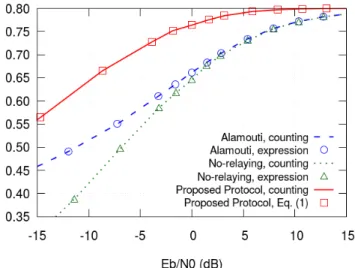Throughput-efficient Relay assisted Hybrid ARQ
Texte intégral
Figure



Documents relatifs
line mode - In this mode of operation Telnet transmits groups of characters which constitute lines. Generally speaking, this mode is used when one or more of
Compared with [7], we focus on the same HARQ relay protocol. Unlike them, to cope with both long term and short term quasi-static channels, we choose to derive the
The proposed knowledge-based approach provides tools to integrate user data with the management service operations, and offers a more complete understanding of user’s contents
This result is quite interesting since despite using more time slots for the transmission protocol (due to the data exchange between relays), the FDSTC protocol still reaches a bet-
in [7]: they consider multiple clusters of users that wish to exchange messages locally within each cluster, with the help of a single relay.. Achievable rates for DF, CF, AF and
detection or joint decoding is used, i.e., arbitrarily high throughput can be obtained simply.. by increasing the transmit power of all users, as opposed to conventional CDMA
We show that by using MU-BF at the source node and a maximum number of relay nodes selected for cooperation, the network gains from multiplexing, while beyond that number of
We determined the capacity of the linear deterministic approximation of the Gaussian noise channel at high SNR, by showing that random switch and correlated non-uniform input bits